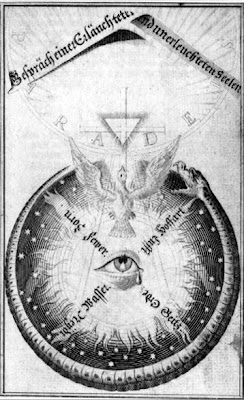The subject of Roswell and Project Mogul came up in correspondence today, and in my reply I wrote the following, which is pretty much my statement when it comes to the so-called "Roswell Incident":
It doesn't really matter to me whether Mogul was the cause or not. I'm sure that something like it, i.e. something prosaic, was what happened, for reasons I'll set out below. I've always thought that the mistake the USAF made was trying to explain away the Roswell "Incident" with a positive alternative, when any debater will tell you that if you're on the negative side of an argument all you have to do is take apart the side being put forward by the affirmative, in this case by the ET crash supporters. Once you offer an alternative, in this case Mogul, it puts a burden of proof on you that was not otherwise there, and takes some of that burden from where it belongs, i.e. on the shoulders of the crash proponents, who have singularly failed to prove their case, despite having over 30 years at it now.
Here are the reasons why I am completely convinced that there was no ET crash.
1. If aliens had sufficiently advanced technology of the kind that would permit travel between the stars (and I've talked to enough scientists to know just how mind-blowingly advanced this would have to be, Stan Friedman and his nuclear rockets balderdash notwithstanding), then it beggars belief that they would crash in spaceships that looked like something out of a 1950s sci-fi B-movie once they got here (much less crash multiple times, as some posit, including Stan).
2. However, allowing for the infinitesimal possibility that Murphy's Law applies to super-advanced aliens, it beggars belief that they would just leave the remains of the ship and their dead comrades to be found by beings who, as Stan puts it, were here to observe us because we might be dangerous someday soon. After all, they were supposedly in New Mexico to monitor nuclear testing and so forth... so how can we be asked to believe that they would let we warlike creatures have their technology? The logical answer is that we can't believe that, because the very reason the crash proponents suggest for the aliens being in New Mexico in 1947 (as opposed to some place like Iceland, or India) is the very reason why the aliens would clean up their mess before we could snag it... and if they had the ability to get here from another star system, then they would certainly have had the ability to collect or vaporize the wreckage.
3. However, allowing for the equally infinitesimal possibility that the aliens are fools, and let us have the technology in the idea that we would never understand it, then it beggars belief yet again that the United States government could have maintained what must be such a vast conspiracy to this day to keep it all quiet. I'm sorry, but that doesn't wash any more than the notion that BushCo. pulled off 9 / 11 as an inside job. Yes, there are conspiracies and cover-ups, and yes, they can be kept for a very long time, but history tells us that the reason they are kept for a very long time successfully is that they are always confined to only a few people. As soon as you start expanding the circle of knowledge, then the wheels fall off. Of course, conspiracists fall back on the old "the information compartmentalized, and only a super small cadre know the complete truth," but that's ludicrous. Even if you knew a portion of the truth, most people would be able to figure out the big picture eventually. And sooner or later if more than a couple people were involved, even at lower levels, some peon would leak something, as Edward Snowden and Bradley Manning and Daniel Ellsberg and the Rosenbergs all showed, that would have verifiable documentation to back it up.
But as I can't get past either point 1 or 2, I never really have to worry about point 3. I merely include it as an exercise in logic. And don't ask me to consider the absurd notion that the aliens staged the entire thing as a "test" or some kind of "counter intelligence" operation. That's like saying you have a dragon, but when people come around to see your dragon you explain to them that he's invisible to everyone but you. It's the ultimate in wish fulfillment excuses for something that does not withstand logical scrutiny.
What confounds me is that a lot of smart people have gotten lost in the weeds around the crashed flying saucer meme, when what they really needed to do was just apply some basic common sense and think the proposition itself through logically.
Paul Kimball












